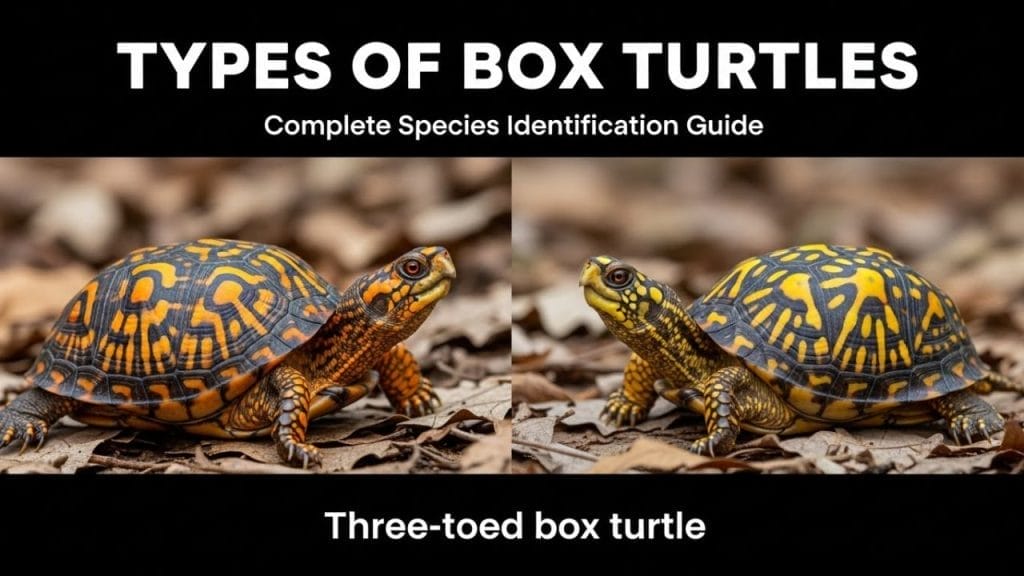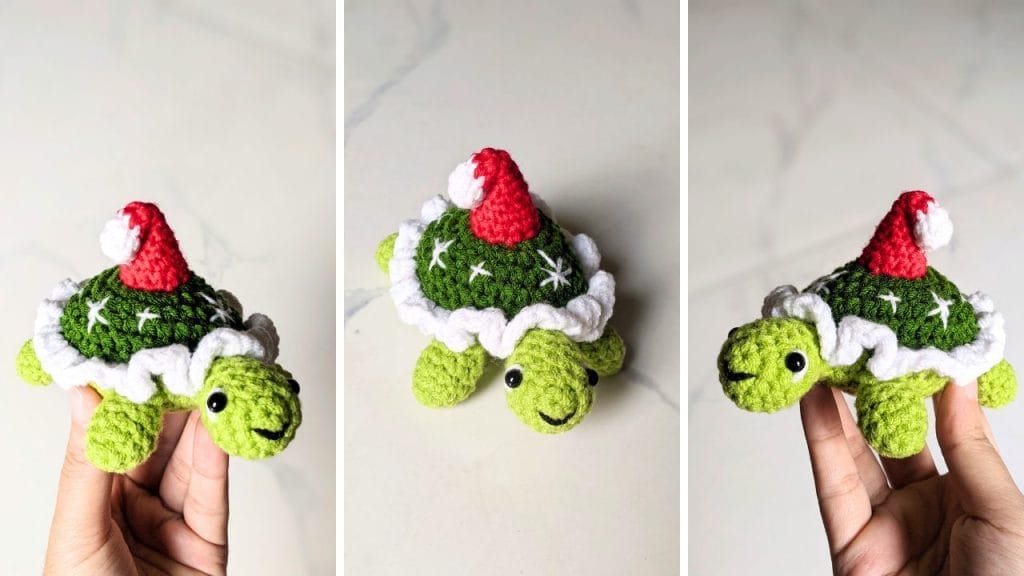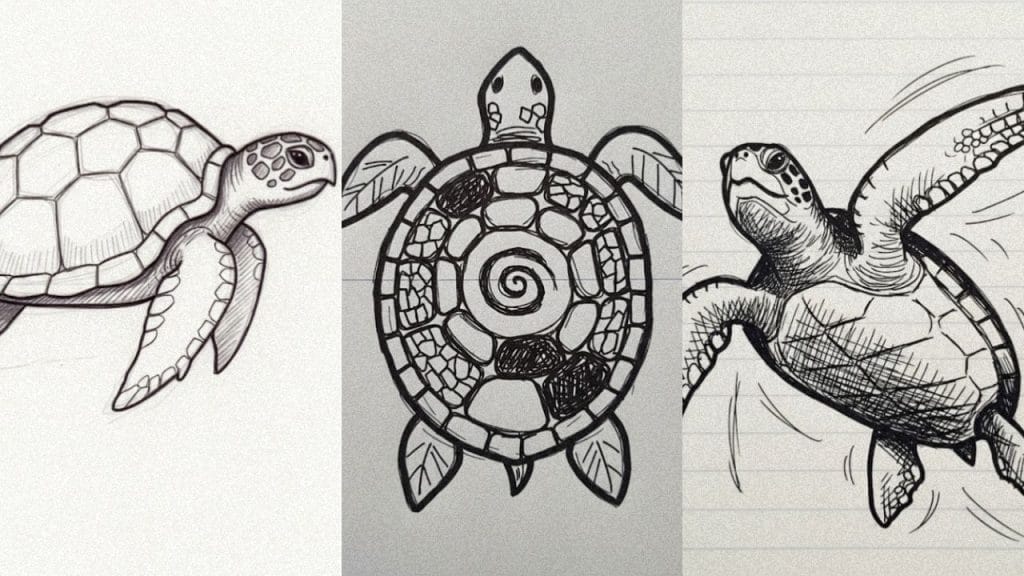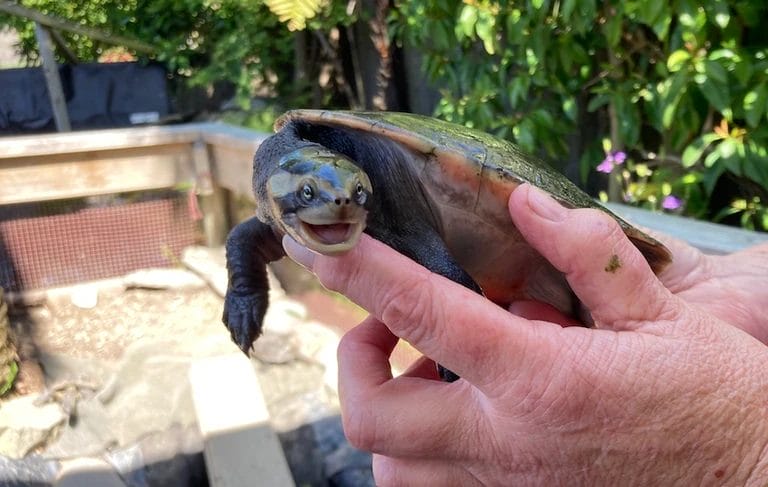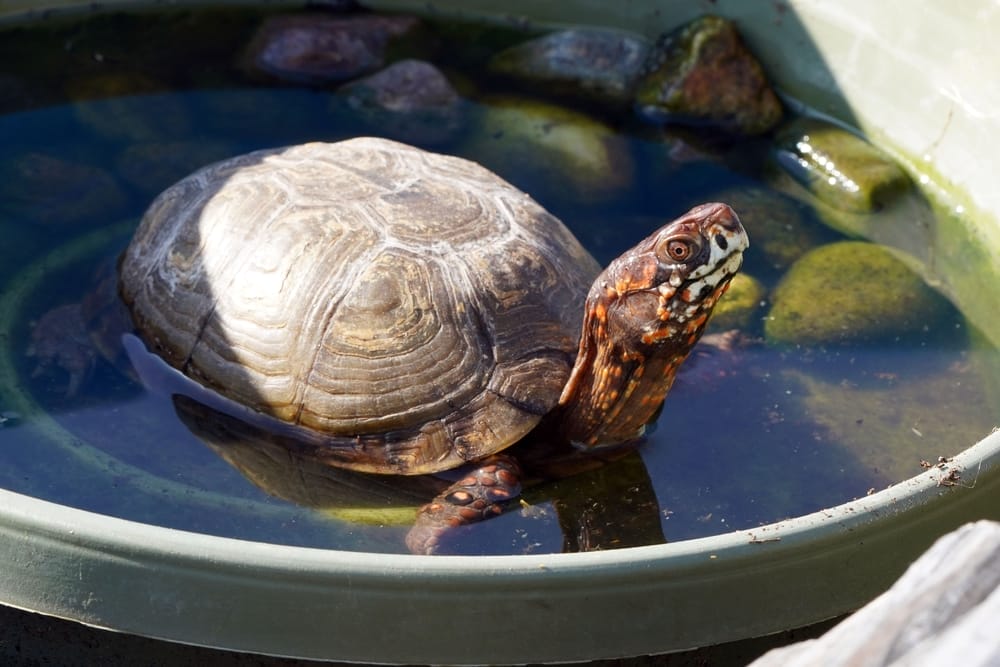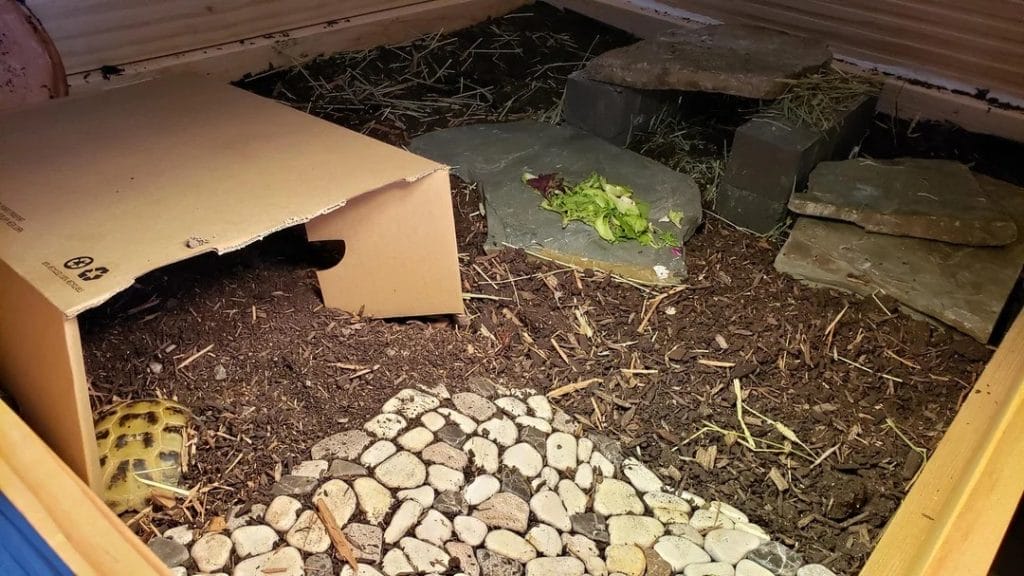How Big Do Sulcata Tortoises Grow? [With Size Chart]

This post was created with help from AI tools and carefully reviewed by a human (Muntaseer Rahman). For more on how we use AI on this site, check out our Editorial Policy.
Sulcata tortoises, also known as African Spurred tortoises are known for their huge size, huge scales, and brown shell. It is why they are so loved by reptile owners. But, how big can sulcata tortoises grow?
Baby Sulcata tortoises, at the age of 1, are usually around 7 inches in width, 2 inches tall, and weigh around 100 grams. At full adult size, a sulcata tortoise can grow 25 to 30 inches in length, and weigh around 90 to 200 pounds.
The growth rate becomes much slower as time passes and it generally takes them 15 to 20 years to become full adults. Male sulcata tortoises grow wider, bigger, and heavier than female sulcata tortoises.
The growth rate of sulcata tortoises is quite intense. Raising them requires time, money, and a lot of attention to detail. So, if you are planning on getting a baby sulcata tortoise, it is important that you know all about how big they can get throughout their entire life. To know more about how big do sulcata tortoises get, keep on reading.
Average Size And Weight Of A Sulcata Tortoise
The average size and weight of a sulcata tortoise vary from one to another depending on the food, nutrition, genetics, environment, etc. It is also a known fact among reptile owners that you should not determine the health of a sulcata by its age.
Average Size Of Hatchling Sulcata
During the hatchling period (0-3 weeks), a baby sulcata weighs around 40 to 50 grams and is 2 inches long. At 90 days, a baby sulcata will weigh up to or more than 50 grams and is usually 2 to 2.5 inches in length.
Average Size Of 1 Year Old Sulcata
Depending on the living conditions, nutrition, calcium intake, and genetics, a baby sulcata at the age of 1 can grow into the size of a baseball to a football. With the right living conditions, a 1 year old baby sulcata will weigh around 1.7 to 2.2 pounds or .8 to 1 kilogram.
Average Size Of 5 Year Old Sulcata
Even with the right living conditions, a five year old sulcata tortoise can weigh anywhere from 1 to 80 pounds and 4 to 25 inches in length.
Although the average size and weight of a five year old sulcata are usually around 5 pounds, and 10 inches in length, there is no guarantee that your sulcata will not exceed this mark.
Average Size Of Adult Sulcata Tortoise
An adult sulcata tortoise will grow a lot. It may or may not exceed the average size and weight of an adult sulcata tortoise, but expect it to grow quite big.
At full adult size, a sulcata tortoise can grow 25 to 30 inches and weigh around 90 to 200 pounds.
Sudanese male sulcata tortoises often reach 100 to 200 pounds at their adult size whereas, female Sudanese sulcata tortoises can grow a bit smaller but still quite big compared to other types of tortoises.
How Fast Does A Sulcata Tortoise Grow?
Sulcata tortoises are considered the fastest growing tortoise in the world. So you probably already understand they grow fast. Especially from the hatchling period to the first five years, sulcata tortoises grow the most.
The growth rate decreases almost dramatically and drastically after the first ten years but it can still get quite big.
Truth be told, there are no fixed or right answers to this specific question. A sulcata hatchling weighs around 40 grams and is usually 2 inches long, but an average five year old sulcata usually weighs around 5 pounds and is 10 inches long. But there have been cases where a 10-year-old sulcata is only 2 inches long.
So, the growth rate of your sulcata tortoise will depend on its diet, living conditions, nutrition, and a lot of other important factors.
As long as your tortoise is growing, and gaining weight even if it is just a little after the first ten years, then don’t worry. However, if you feel like your sulcata is not growing or the growth is too steady, then contact a vet as soon as possible.
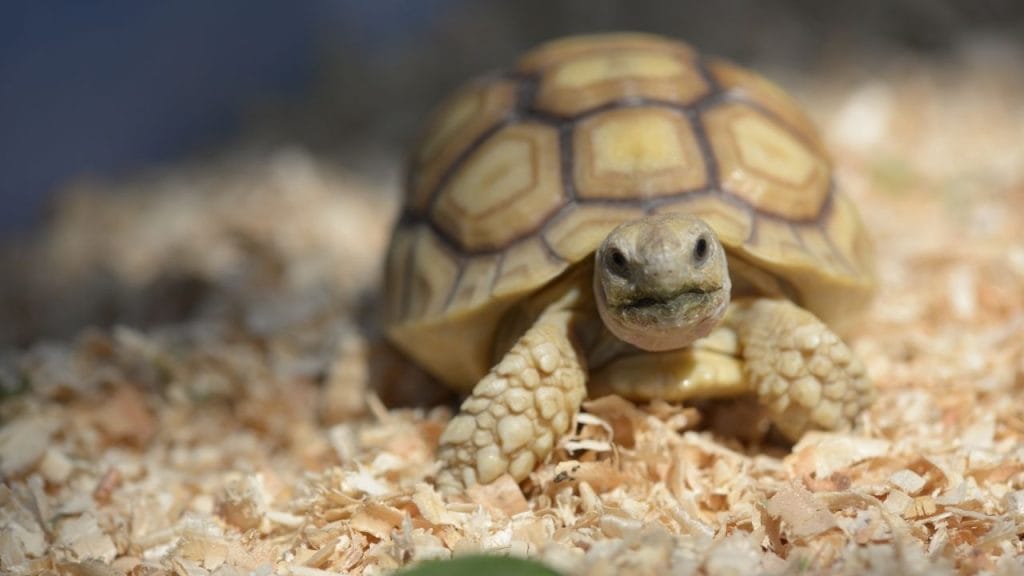
This Hilarious Turtle Book Might Know Your Pet Better Than You Do
Let’s be real—most turtle care guides feel like reading a textbook written by a sleep-deprived zookeeper.
This one’s not that.
Told from the snarky point of view of a grumpy, judgmental turtle, 21 Turtle Truths You’ll Never Read in a Care Guide is packed with sarcasm, sass, and surprisingly useful insights.
And hey—you don’t have to commit to the whole thing just yet.
Grab 2 free truths from the ebook and get a taste of what your turtle really thinks about your setup, your food choices, and that weird plastic palm tree.
It’s funny, it’s honest, and if you’ve ever owned a turtle who glares at you like you’re the problem—you’ll feel seen.
Sulcata Tortoise Growth Chart
All of the data we have provided here are collected from various research, and websites. However, these numbers are averages and your sulcata may not always grow the same way. They might exceed the average numbers, and sometimes they might not.
| Age | Length | Weight (Pounds) | Weight (Grams/Kg) |
|---|---|---|---|
| 0-3 weeks | 1.5- 2 inches | 0.08 pounds | 30-40 grams |
| 3-12 months | 2.5-5.5 inches | 0.12-0.17 pounds | 50-78 grams |
| 1-2 years | 6-8 inches | 1.7-2.2 pounds | .8-1 kg |
| 3-5 years | 10 inches | 4.7 pounds | 2.8 kg |
| 6-10 years | 10.6- 16 inches | 8.4-17.4 pounds | 3.8-7.8 kg |
| 12-15 years | 24-30 inches | 26.5 pounds | 12.2 kg |
At What Age Is A Sulcata Tortoise Fully Grown?
A sulcata tortoise is considered fully grown at the age of 15. They reach their final adult size from 15 to 20 years.
And they are considered small until age seven. Because around the age of 7, a sulcata may weight up to or more than 30 pounds. All baby sulcatas during their hatchling periods usually weigh around 50 grams, which is considered very small.
However, age should not be a factor when determining the size of a sulcata. A 5 year old sulcata can weigh anywhere from 1 to 80 pounds.
Sulcata tortoises can grow rapidly and the growth rate varies from one to another most of the time. It is why you cannot calculate how big your sulcata might get from the outset.
So if you are planning on getting a baby sulcata, it is ideal that you keep these things in mind. We suggest that you plan according to the largest size of the tortoise so if things do not go the way you ultimately planned, at least your sulcata will not have to struggle.
Factors That Can Alter The Growth Of A Sulcata Tortoise
The age of a sulcata tortoise should never be an indicator of its health. The same can be said about its health as well. Sulcata tortoises do have a different growth rate that varies from one to another.
But if they are given the right living conditions, their growth rate will not be impacted at all. These factors can influence the growth rate of your sulcata greatly.
Food
Sulcata tortoises come from the African continents. Typically belonging to Savannas near deserts, these tortoises eat a lot of grass, flowers, and weeds.
The first and foremost factor that can alter and influence the diet of a sulcata tortoise is its diet. As I have mentioned earlier, sulcata tortoises are herbivores.
In the wild, a sulcata will eat plants that provide the greatest nutrition to them but as a pet, those options are no longer available to them. So as an owner, it is your responsibility to ensure your tortoise is getting all the nutrition it would naturally get in the wild.
Grasses, edible flowers like roses, geranium flowers, dandelions, and shrubs are the most common food for sulcata tortoises.
To replicate their diet as much as possible, you should ensure that at least 80% of their diet is from grass. At least 10% of their diet should consist of nutritious greens like turnip, kale, mustard, etc.
Although spinach, collard greens, parsley, and rhubarbs are nutritious greens, these are high oxalate vegetables so you should not include a lot of these in your tortoises’ diet. Plants with a lot of oxalates can be fed to a sulcata when it is in small amounts and is a part of a varied diet.
Oxalates block the absorption of calcium in a sulcata tortoises’ body by bonding with the calcium. Calcium oxalates can cause mouth irritation. High oxalate vegetables should be a part of their diet occasionally and sparingly.
Grasses consist of a lot of fibers and low levels of proteins which is important for sulcata tortoises. Lots of fibers ensure a clean diet while low levels of protein ensure your tortoise is not gaining excessive weight.
High carb vegetables and high protein food can cause your sulcata to gain excessive weight. Sulcata tortoises store fat in their neck and limbs, which can cause hindrance to moving around freely. Restriction of movement can later strain their muscles, and cause issues in the circulatory system.
The rule of thumb for weight gain in sulcata tortoises is 1 to 4 grams per month. Yes, there is no exact way to tell the growth rate of your sulcata, but they should not gain too much weight from consuming food that is bad for them.
If you feel like your sulcata is gaining weight too fast, then contact a vet as soon as possible.
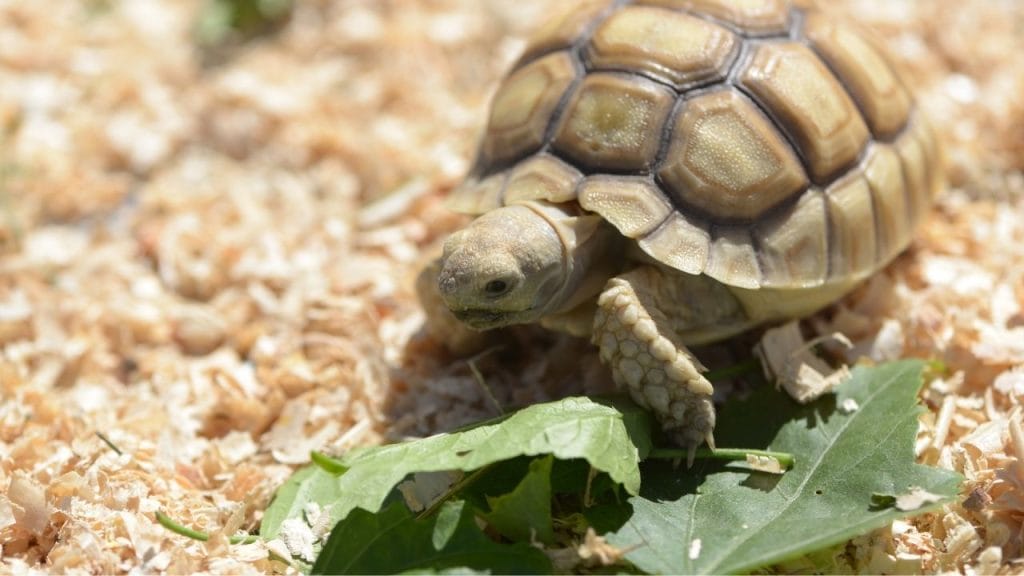
Calcium Intake
Calcium intake is the second most important factor that can influence the growth of a sulcata tortoise greatly. Tortoises need a sufficient amount of calcium to grow properly and without it, your sulcata may not grow to their full size and potential.
Without a sufficient amount of calcium in their body, their shell can soften and lead to metabolic bone disease in the long run. A growing tortoise needs calcium for both its shell and skeleton. Calcium also helps to grow the muscle.
In the wild sulcata tortoises ingest calcium-rich soils to fulfill their required calcium intake. Since they can no longer do that as a pet, you have to enrich their diet with calcium supplements and calcium-rich food. However, make sure their food is also phosphorus poor as phosphorus is an opposing mineral and can stop your sulcata from absorbing the calcium properly.
Environment
As mentioned earlier, sulcata tortoises hail from the deserts of Africa. They are accustomed to living in sunny and dry areas with high temperatures and low humidity. If your pet sulcata is not living in a condition that is closest to this, then its growth may hinder greatly.
If your pet sulcata is living in damp, cold, and humid environments, it will face severe health issues like fungal growth. And an unhealthy sulcata can never grow to its potential.
Lighting
UVB lighting is crucial for tortoises and a sulcata tortoise is no exception either. Sulcata tortoises need a sufficient amount of UVB exposure so they can synthesize vitamin D3 which helps them to absorb calcium. Vitamin D3 is also crucial in processing calcium in the body.
A sulcata needs UVB lighting which they would obtain directly from the sun in the wild. But as a pet, they no longer have the same access to the sun. Make sure you are providing enough UVB lighting for your sulcata.
A sulcata should get at least 10 to 12 hours in UVB lighting. Don’t forget to turn the lighting off during nighttime to ensure your sulcata tortoise is getting enough sleep.
Final Words
Sulcata tortoises make ideal pets for people who are willing to commit to them for a lifetime. This docile and sociable tortoise lives up to 70 years. The growth rate substantially reduces once they reach the adult stage but they still need to be taken care of with great caution.
Many first-time sulcata owners fail to understand that keeping a tortoise of this species requires a huge amount of work and space. They will grow quite a lot at the early stages of their life so you will have to keep enlarging their housing to keep them comfortable. If you fail to do so, your sulcata will lead a very unhealthy life.

About Author
Muntaseer Rahman started keeping pet turtles back in 2013. He also owns the largest Turtle & Tortoise Facebook community in Bangladesh. These days he is mostly active on Facebook.


